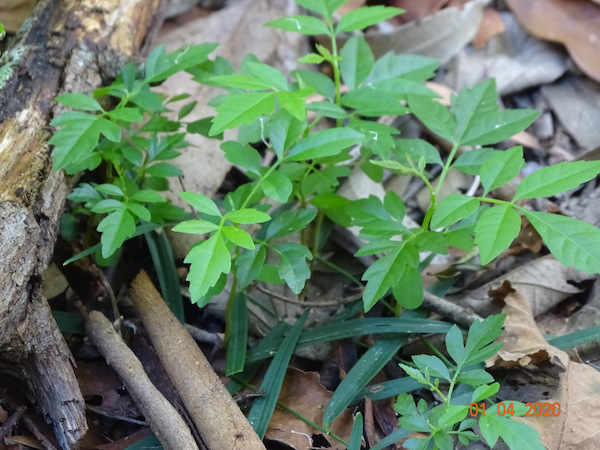
Its always great to see the process of bush regeneration pass from something that bushcare workers do, to something that the natural environment does. It provides hope that our efforts are working and the ecosystem is becoming self-sustaining. In this case, Red Cedar (Toona ciliata) seedlings have self-sown from trees which we planted decades earlier.
This species spreads easily in its preferred conditions (next to rivers and creeks in tropical and subtropical areas) because of winged seeds that travel well. Red Cedar is found all across south-east Asia from Afghanistan to Norfolk Island. In Australia it is found in rain-forest areas of Queensland and New South Wales, so Ekibin Creek is in the middle of its range here. The tree is particularly useful because it grows quickly and provides shade for other rain-forest species. It is also has beautiful foliage and timber. Of course its economic value has decreased from earlier times when its durable but easily worked timber was much sought after. Nowadays, caterpillars of Cedar Tip moth attack the growing plants so that they form multi-branch forms rather then single (and less desirable) trunks.
Meanwhile, our cedars are doing well. We’ll probably give these seedlings a little helping hand by replanting them further apart and marking the replanted area with shredded paper to signal that they aren’t weeds.